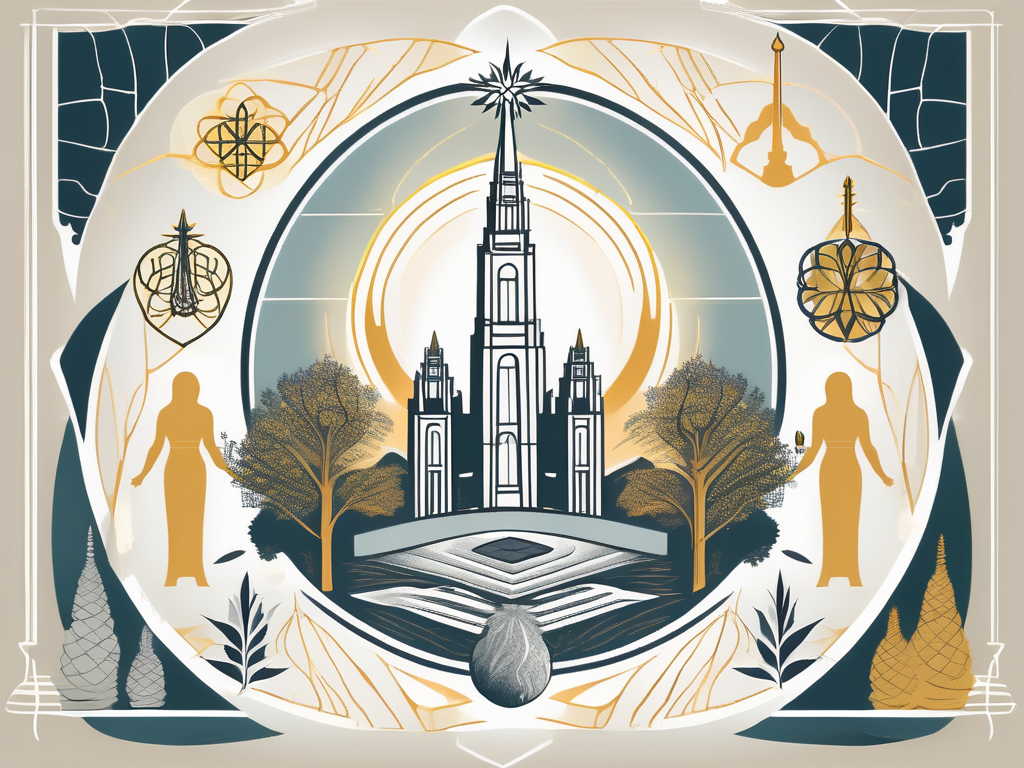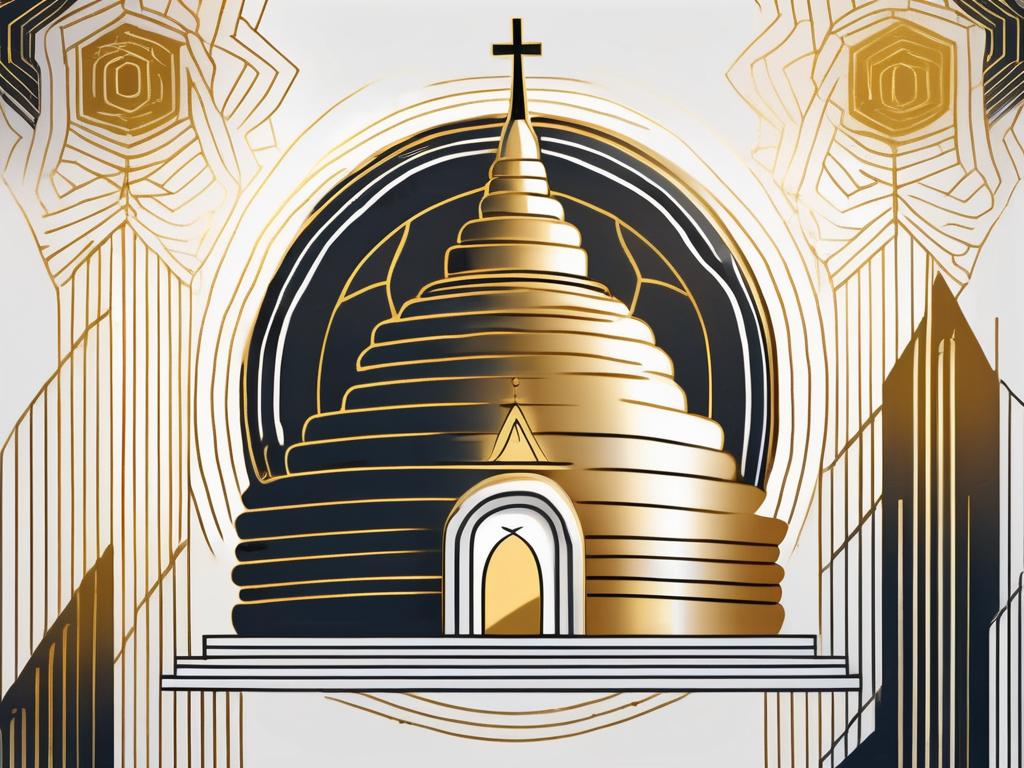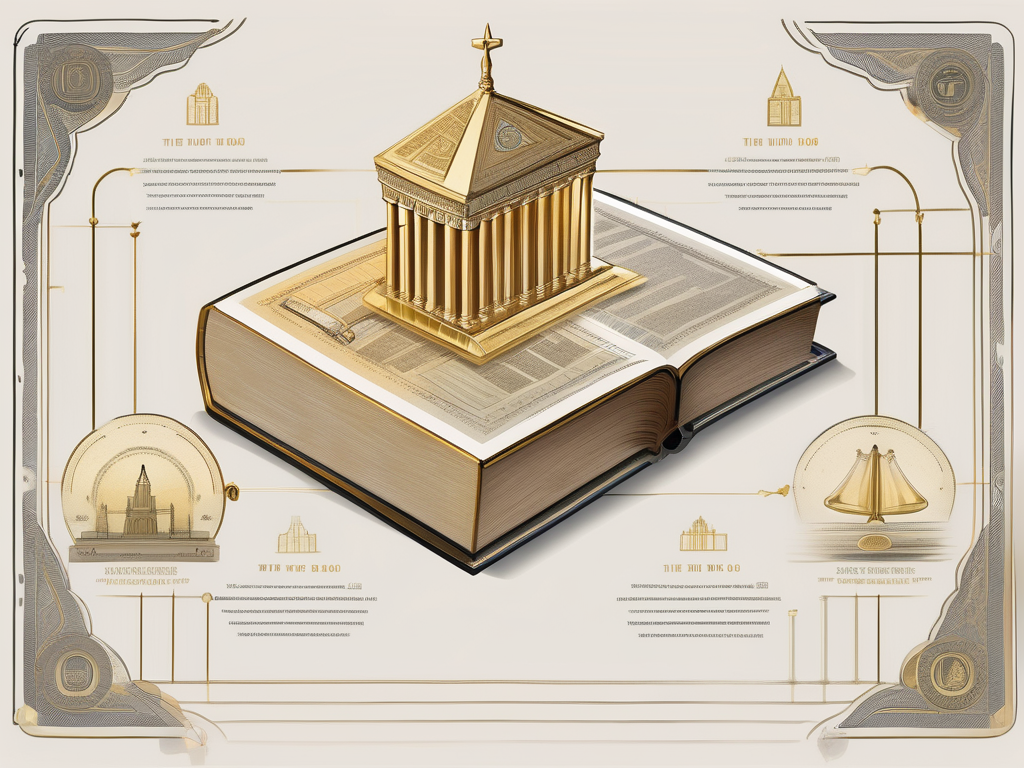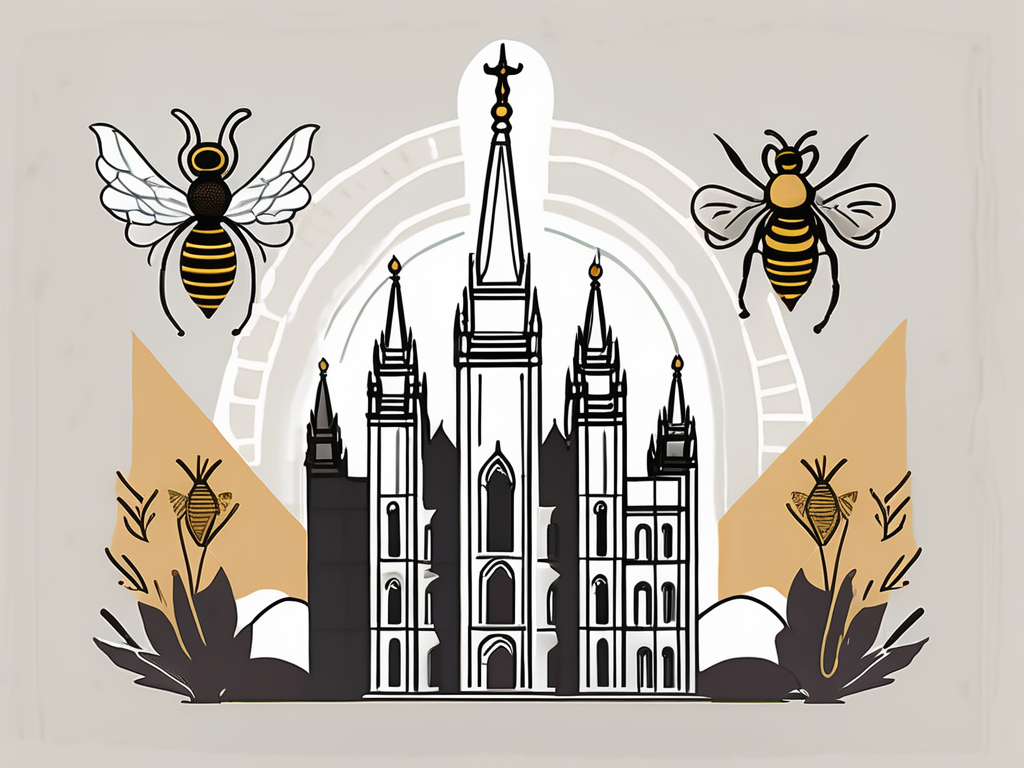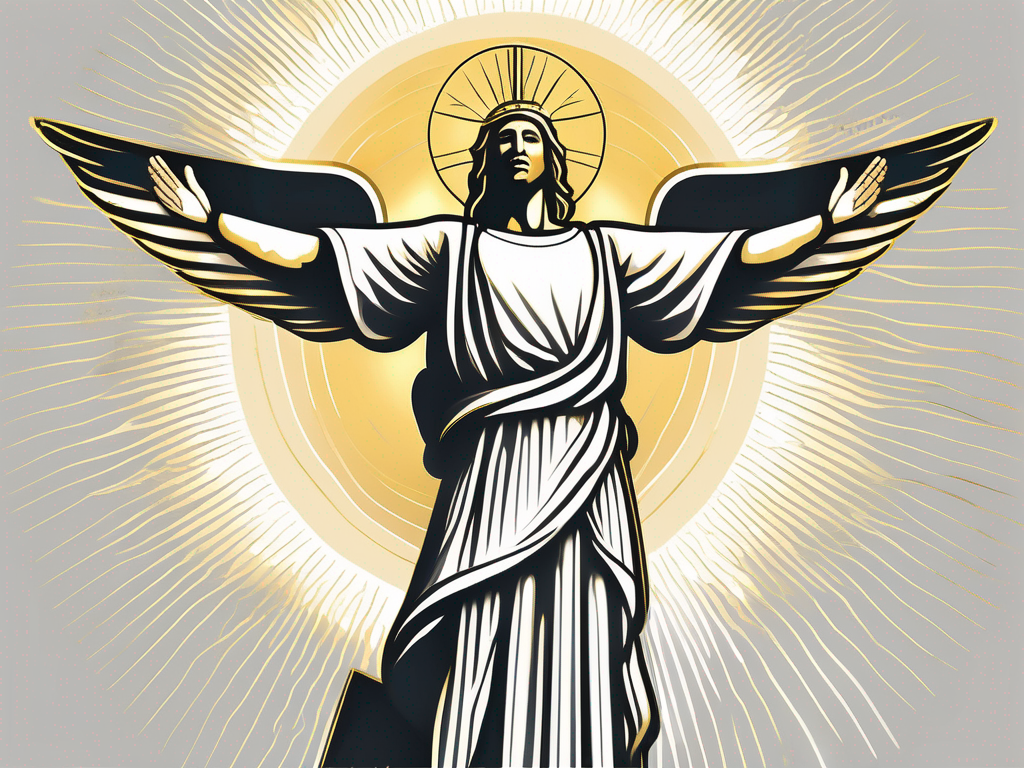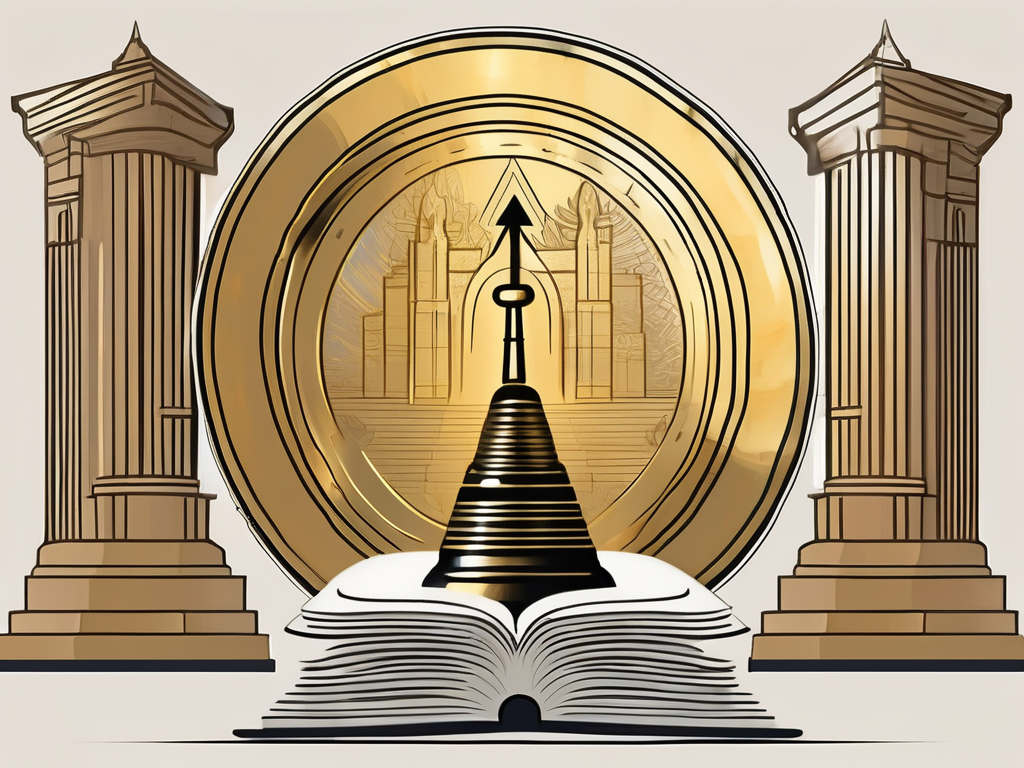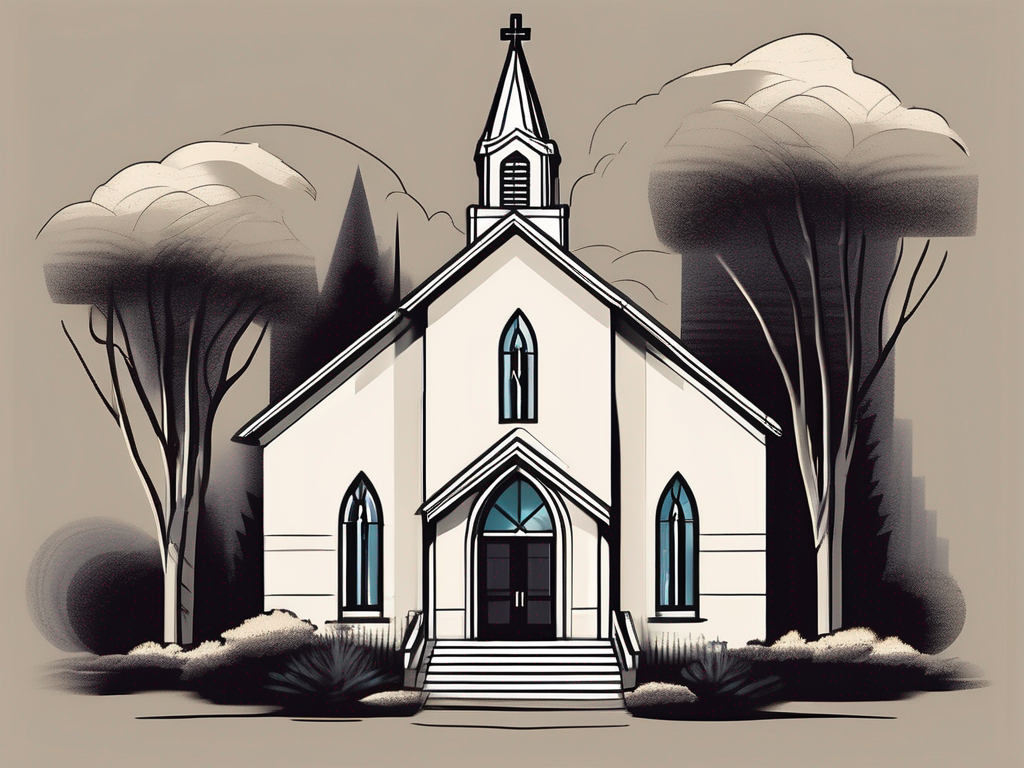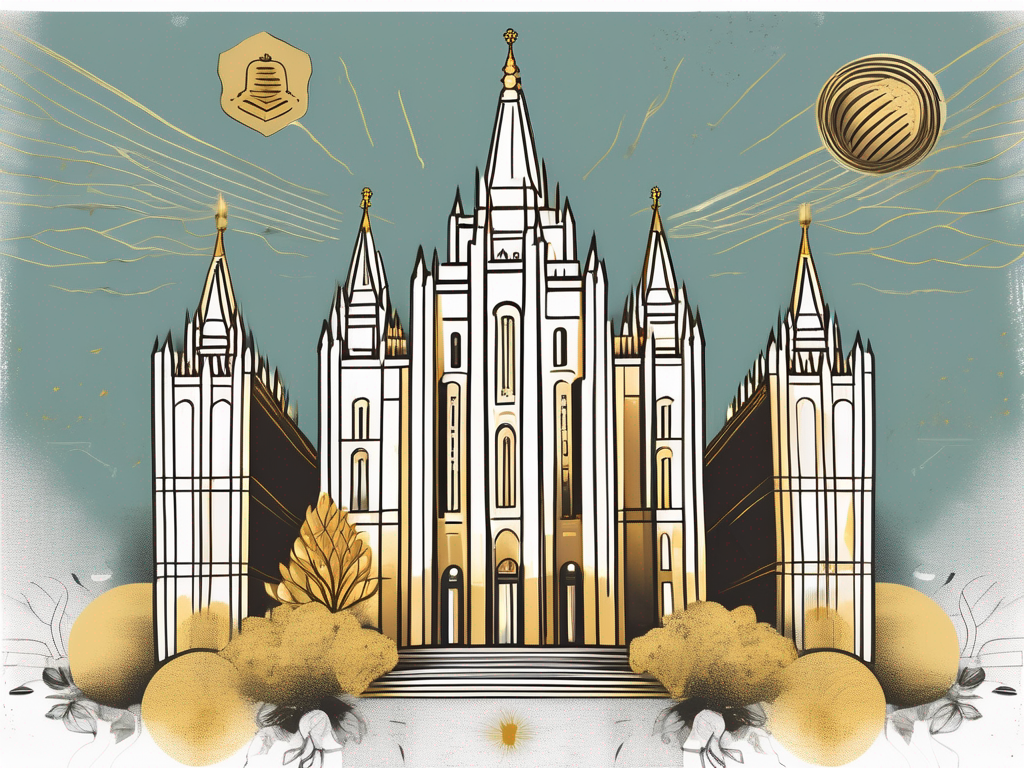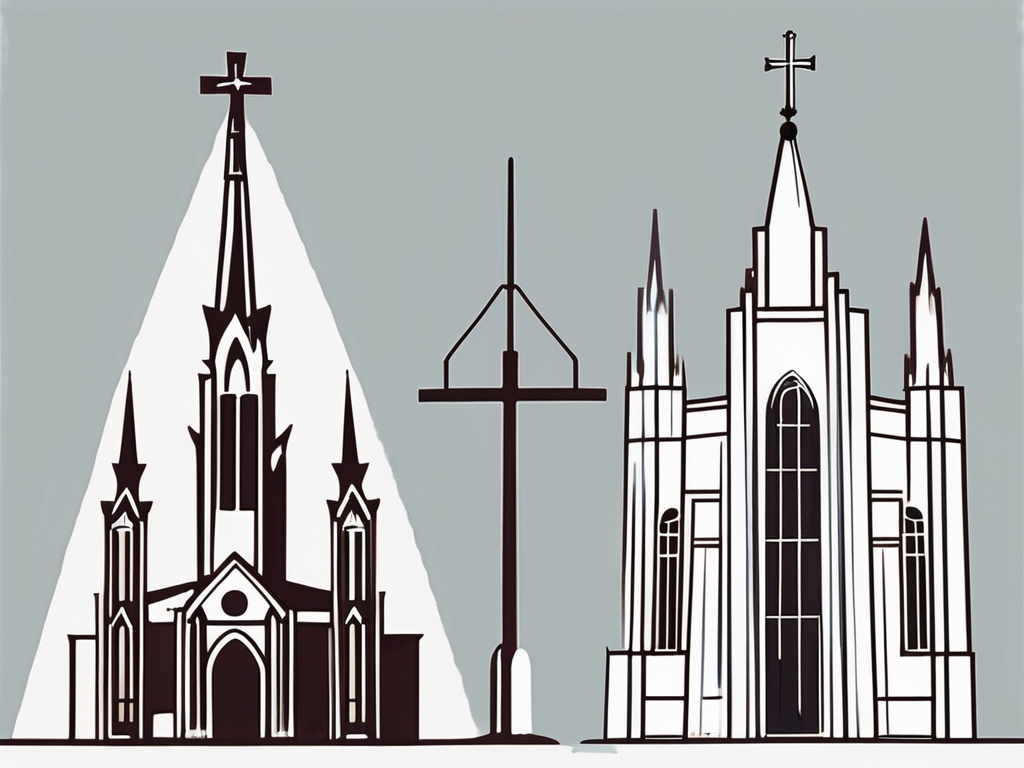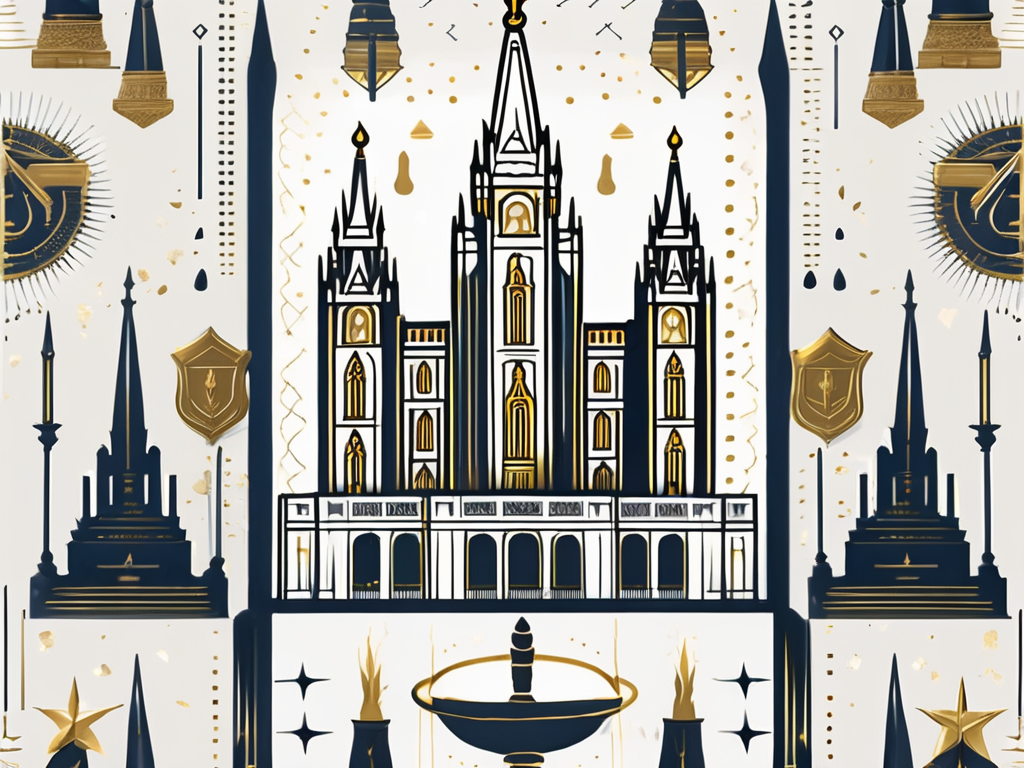Mormonism is a religious tradition that encompasses a rich tapestry of symbolism. From its founding to its rituals, art, and daily life, symbols play a vital role in Mormon culture and identity. In this comprehensive guide, we will delve into the world of Mormon symbolism, exploring its significance and the ways it influences the lives of its followers. Let’s begin by understanding the basics of Mormonism.
Understanding the Basics of Mormonism
Mormonism, also known as the Church of Jesus Christ of Latter-day Saints, is a religious movement that traces its origins back to the early 19th century. It was during this time that Joseph Smith, Jr., a young man from upstate New York, claimed to have received divine revelations that would ultimately lead to the establishment of the Mormon Church.
Joseph Smith’s encounters with God and angels are central to Mormon belief and form the bedrock of the faith. According to Smith, he was visited by God the Father and Jesus Christ in a vision, where he was instructed to restore the true church on earth. This divine encounter, known as the First Vision, is regarded as a pivotal moment in Mormon history.
The Founding of the Mormon Church
Following the First Vision, Joseph Smith began receiving further revelations and guidance from heavenly messengers. He claimed to have been visited by the angel Moroni, who revealed the existence of ancient golden plates buried in a nearby hill. Smith translated these plates by the power of God and published the resulting text as the Book of Mormon.
The Book of Mormon is considered by Mormons to be another testament of Jesus Christ, alongside the Bible. It recounts the religious history of ancient civilizations in the Americas and teaches principles of faith, repentance, and salvation. The publication of the Book of Mormon marked a significant milestone in the establishment of the Mormon Church and solidified Joseph Smith’s role as its founding prophet.
Key Beliefs and Practices in Mormonism
Mormonism is a Christian religion with its own unique teachings and practices. Mormons believe in a loving Heavenly Father, Jesus Christ as the Savior of mankind, and the Holy Spirit as a guiding influence in their lives. They consider themselves to be part of the larger Christian tradition, but with additional revelations and scriptures that provide further understanding of God’s plan.
One of the distinctive aspects of Mormonism is its emphasis on family and the eternal nature of relationships. Mormons believe that families can be sealed together for eternity through sacred ordinances performed in their temples. This belief in eternal families shapes their approach to marriage, parenting, and the importance of strong family ties.
Mormon rituals, such as baptism and temple worship, are laden with symbolism and serve as important milestones in a person’s spiritual journey. Baptism is seen as a necessary ordinance for salvation, while temple worship is reserved for faithful members who have made specific covenants with God. These rituals not only reflect core doctrines but also promote spiritual growth and a deeper connection with God.
In addition to their religious practices, Mormons are known for their strong sense of community and service. The Church places a strong emphasis on humanitarian aid and disaster relief, and its members actively engage in charitable work both locally and globally. Mormons also strive to live by a strict code of moral conduct, which includes abstaining from alcohol, tobacco, and other harmful substances.
Overall, Mormonism is a faith that encompasses a rich history, unique beliefs, and a strong sense of community. Its teachings and practices continue to shape the lives of millions of people around the world, providing them with a framework for understanding their relationship with God and their purpose in life.
The Role of Symbolism in Mormonism
Symbols serve as a medium of communication between humans and the divine. In Mormonism, symbols enhance understanding and spiritual connection. They are used to express complex concepts, impart moral lessons, and inspire meditation and reflection. Symbols bridge the gap between the tangible and intangible, helping Mormons deepen their spiritual experience.
One of the most prominent symbols in Mormonism is the Angel Moroni. Depicted blowing a trumpet, this symbolizes the restoration of the gospel. It represents the divine messenger who appeared to Joseph Smith and guided him to the golden plates, from which the Book of Mormon was translated. The Angel Moroni serves as a reminder of the divine intervention in the founding of the Mormon faith.
Another significant symbol in Mormonism is the beehive. This symbolizes industry and cooperation. It reflects the values of hard work, self-sufficiency, and unity within the Mormon community. The beehive represents the idea that Mormons should be diligent and productive, working together for the common good.
In addition to the Angel Moroni and the beehive, the seagull is another symbol that holds great importance in Mormonism. It commemorates a miracle that saved the early Mormon pioneers’ crops from a locust plague. According to Mormon history, when the pioneers’ crops were being destroyed by locusts, seagulls suddenly appeared and devoured the insects, saving the harvest. The seagull symbolizes divine intervention, protection, and the faithfulness of God in times of trial.
These symbols in Mormonism evoke a sense of history and heritage. They constantly remind believers of the faith’s origins, values, and the divine guidance that has shaped their community. The use of symbols in Mormonism is not only a means of visual representation but also a way to connect with the spiritual realm and reinforce the teachings and principles of the faith.
The Importance of Symbols in Religious Practices
Symbols have always played a crucial role in religious practices across different cultures and traditions. They serve as powerful tools to convey abstract ideas, convey deeper meanings, and create a sense of identity and belonging within a religious community. Symbols have the ability to transcend language barriers and communicate on a universal level, allowing individuals to connect with the divine and express their faith.
In religious rituals, symbols often take center stage. They are used to represent sacred concepts, stories, and beliefs, making them more accessible and relatable to individuals. Symbols can be found in various forms, such as visual representations, gestures, objects, or even specific colors. They provide a tangible and visual way for individuals to engage with the intangible aspects of their faith.
Moreover, symbols in religious practices can serve as reminders of important events, teachings, or values. They act as visual cues, prompting believers to reflect on their faith and its teachings. Symbols can also facilitate a deeper understanding of complex theological concepts, allowing individuals to grasp and internalize abstract ideas more easily.
Furthermore, symbols in religious practices often carry cultural and historical significance. They reflect the traditions, customs, and beliefs of a particular religious community, creating a sense of continuity and shared identity. Symbols can evoke a sense of nostalgia, connecting individuals to their religious heritage and fostering a sense of belonging within a larger religious tradition.
In conclusion, symbols play a vital role in religious practices, including Mormonism. They enhance understanding, deepen spiritual connection, and serve as reminders of important teachings and values. Symbols in religious practices have the power to transcend language barriers, communicate on a universal level, and create a sense of identity and belonging within a religious community.
Symbolism in Mormon Rituals and Ceremonies
The symbolism found in Mormon rituals and ceremonies is deeply rooted in the beliefs and teachings of The Church of Jesus Christ of Latter-day Saints. These sacred practices hold great significance for members of the faith, representing profound spiritual truths and principles.
The Symbolic Nature of Mormon Baptism
Baptism, one of the most important ordinances in Mormonism, holds rich symbolism that resonates with believers. It is a sacred act that signifies the purification of sins and the commitment to follow Jesus Christ. As individuals are immersed in water, they symbolically bury their old selves and rise as new, repentant followers of Christ.
Through this symbolic act, Mormons express their desire to be cleansed from sin and start anew, embracing a life of discipleship and obedience to God’s commandments. The act of baptism serves as a powerful reminder of the Atonement of Jesus Christ and the opportunity for redemption and spiritual rebirth.
Furthermore, the symbolism of baptism extends beyond the individual’s personal journey. It also represents unity within the Mormon community, as members come together to witness and support one another in this sacred ordinance. The act of baptism serves as a unifying force, strengthening the bonds of fellowship and reinforcing the shared commitment to living the teachings of Christ.
The Sacred Symbols in Mormon Temple Worship
Mormon temples are renowned for their intricate symbolism, which is woven into every aspect of their design. These sacred spaces are considered to be the House of the Lord, where Mormons participate in ordinances and make covenants that are believed to have eternal significance.
Within the temple, various symbols are used to convey profound spiritual truths and teachings. The celestial rooms, for example, are designed to represent heavenly glory and the eternal blessings that await faithful followers of Christ. These rooms are adorned with beautiful artwork and furnishings, creating an atmosphere of peace and serenity.
Other symbols, such as the Tree of Life and the All-Seeing Eye, are prominently displayed throughout the temple. The Tree of Life, a symbol found in the Book of Mormon, represents the love of God and the path to eternal life. It serves as a reminder of the importance of seeking and holding onto the word of God in order to partake of His blessings.
The All-Seeing Eye, often depicted as an eye within a triangle, is a symbol of God’s omniscience and His watchful care over His children. It serves as a reminder that God is aware of all things and is intimately involved in the lives of His followers.
These sacred symbols, among many others, play a significant role in Mormon temple worship. They serve as visual reminders of the divine potential that Mormons believe they possess and the ultimate destiny that awaits them in the presence of God.
Symbolism in Mormon Art and Architecture
The Use of Symbolism in Mormon Visual Arts
Mormon artists utilize symbolism to visually communicate religious themes and messages. Paintings and sculptures often depict scenes from the Book of Mormon and the life of Jesus Christ, emphasizing key events and principles. By employing symbolism, these artworks aim to evoke spiritual contemplation and strengthen the viewer’s faith.
One example of symbolism in Mormon visual arts is the use of colors. Artists carefully select and blend colors to convey specific meanings. For instance, the color white is often associated with purity and divinity, representing the presence of God. In contrast, darker shades may symbolize spiritual challenges or moments of introspection. Through the skillful use of color symbolism, Mormon artists create a deeper visual experience for the viewer, inviting them to reflect on the spiritual significance of the artwork.
In addition to colors, Mormon artists also incorporate symbolic objects and elements into their works. These objects can range from simple everyday items to more intricate and sacred symbols. For example, the depiction of a lily flower may symbolize purity and resurrection, while a dove can represent the Holy Spirit. By including these symbolic elements, artists add layers of meaning to their artwork, allowing viewers to engage with the spiritual message on a deeper level.
The Significance of Symbols in Mormon Temples and Buildings
Mormon architecture is designed to reflect sacred symbolism and create a reverent atmosphere. Temples, with their spires and detailed craftsmanship, serve as physical representations of spiritual ideas. The spires reaching towards the heavens symbolize the eternal nature of God and the aspiration to draw closer to Him. The intricate carvings and meticulous attention to detail in temple architecture reflect the devotion and reverence that Mormons hold for their faith.
Even regular meetinghouses incorporate symbols, encouraging worshipers to approach the space with reverence and a sense of holiness. The prominent use of stained glass windows, for example, allows natural light to filter through, creating a serene and sacred ambiance. These windows often feature religious symbols and scenes, reminding congregants of their spiritual heritage and the teachings of their faith.
Furthermore, the layout and design of Mormon temples and meetinghouses are carefully planned to enhance the worship experience. Symbolic elements, such as the baptismal font and the sacrament table, are strategically placed to emphasize their importance in Mormon religious practices. The use of symbolism in these sacred spaces serves as a constant reminder of the eternal truths and principles that Mormons hold dear.
The Influence of Symbolism on Mormon Culture and Identity
How Symbols Shape Mormon Community and Identity
Symbols unite the Mormon community by fostering a shared language and understanding. Seeing a familiar symbol instantly creates a sense of belonging and reinforces a collective identity. Symbols also play a role in shaping individual identities, reminding Mormons of their values and commitment to their faith.
The Role of Symbols in Mormon Daily Life
Symbolism is not limited to special occasions in Mormonism; it permeates daily life. Mormons strive to embody principles represented by symbols, such as honesty, compassion, and hard work. Symbols serve as constant reminders of the values they hold dear, helping Mormons align their actions and attitudes with their beliefs.
As we unveil the symbolism of Mormonism, it becomes evident that symbols are not mere decorative elements. They are profound expressions of spirituality, communication tools connecting the human and the divine. From the founding of the church to rituals, art, and daily life, symbols play an integral role in the lives of Latter-day Saints, enriching their spiritual journey and shaping their identity.
